We tend to think of the Arts and Crafts movement in male terms, of William Morris, for example, who co-founded the home furnishings company Morris & Co; of William De Morgan, who made lustreware ceramics; and of CR Ashbee, who set up The Guild of Handicraft, to name just three leading lights. But woven through this tapestry of artistic endeavour are female threads too; women whose stars are on the rise today.
‘Increasingly, we’re uncovering the roles that women had in the iconic design firms of the late 19th and early 20th centuries, such as Morris & Co and Liberty,’ says John Mackie, director of decorative arts at Lyon & Turnbull, who runs the firm’s popular twice-yearly Decorative Arts: Design from 1860 sales.
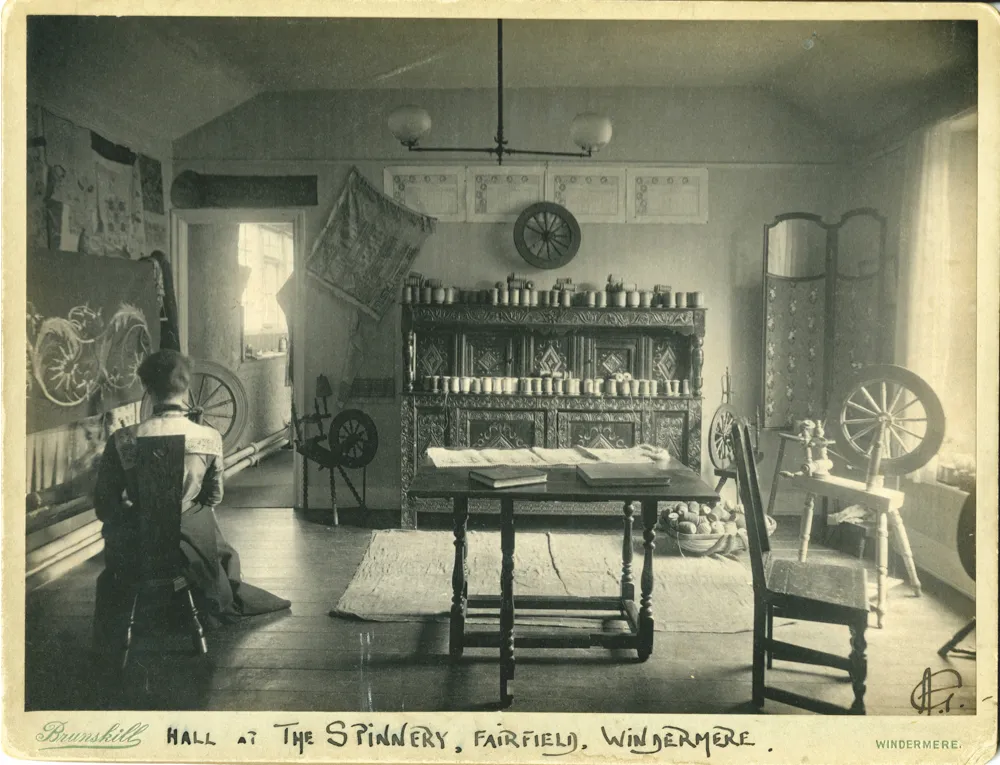
Textile designer and entrepreneur Annie Garnett at her spinning wheel in Windermere in 1904. Credit: Lakeland Arts
‘Within art history, since the 1980s, there’s been a slow and steady resurgence of female Arts and Crafts designers,’ agrees Chelsea Eves, a curator at Blackwell, the magnificent Arts and Crafts house perched above Lake Windermere in the Lake District. Two years ago, Blackwell hosted a groundbreaking exhibition on exactly this theme, ‘Women of the Arts & Crafts Movement’, to explore the female contribution to the style. ‘Unlike the male Arts and Crafts designers, these women weren’t architects, nor did they produce interior design schemes or make furniture. Instead, they played to their strengths in textiles, embroidery, metalware, jewellery, painting and ceramics, which they had learnt at art school or been taught as a pastime.’ She cites the case of Annie Garnett from Bowness-on-Windermere, a middle-class girl who was not expected to work but who craved a creative path. After learning how to spin, weave and embroider at local classes with the curate’s wife, she set up her own business in 1891, The Spinnery. Up until 1914, the highly regarded workshop produced many silk, linen and tweed fabrics, including the hand-woven silk Fritillary design for Queen Alexandra.

Garnett was inspired by the flowers in her Lake District garden, as this delicate Fritillary design shows. Credit: Lakeland Arts
May Morris

May Morris. Credit: William Morris Society
May Morris was equally talented and driven, putting ‘art embroidery’ on the map, and had the good fortune to be the daughter of William Morris. Free-thinking May grew up surrounded by her parents’ artistic coterie of friends and, like them, she championed the nobility of craftsmanship within a highly industrialised society. A leading female light in the Arts and Crafts movement, among her many achievements was the founding of the Women’s Guild of Arts in 1907, which attracted over 100 members specialising in everything from embroidery and enamelling to stained glass and jewellery.
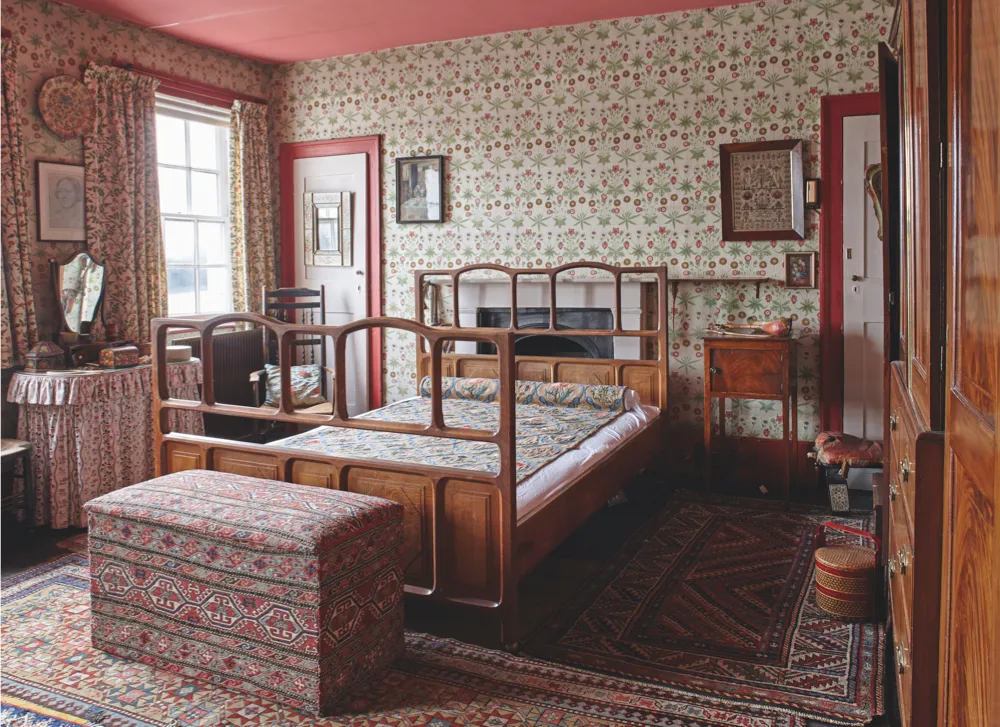
May Morris embroidered the bedspread in this room at Emery Walker’s home, a friend of May’s father.
Morris learned embroidery at her mother Jane’s knee, studying the craft further at the National Art Training School (now the Royal College of Art) in South Kensington. The opening of art schools to women from the 1870s onwards was a crucial factor in the subsequent flowering of female talent in the Arts and Crafts movement.
In 1885, at 23, she was appointed head of the Morris & Co embroidery department. Hugely inspired by Opus Anglicanum, the richly decorative English medieval embroidery technique, she devised myriad designs, from fire screens and wall hangings to home embroidery kits, chair seats and door curtains. Her designs can be seen in Arts and Crafts houses and collections, from the modest rooms of Emery Walker’s house in Hammersmith (entirely decorated in original Morris & Co wallpapers) and the William Morris Society at Kelmscott House nearby, to the grander mansions of Kelmscott Manor in Gloucestershire and Wightwick Manor in the Midlands.
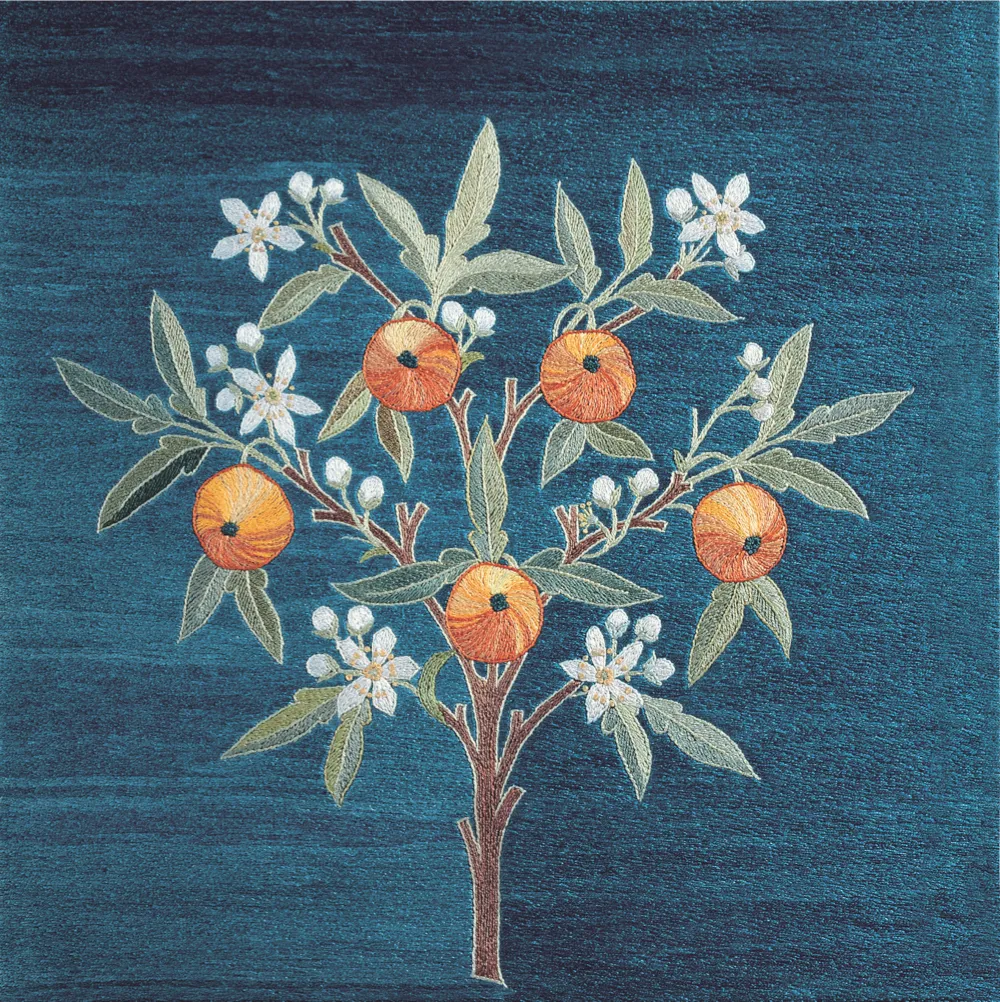
May’s Orange Tree embroidery, which she worked on in the late 1890s.
May developed her own style, a softer, more feminine take on flora than that of her father. Whereas William favoured classical acanthus and pomegranates in his designs, May depicted the flowers of the English countryside for hers, sketching directly from nature.
‘May Morris had raw talent and was able to produce designs that are still being used today,’ says Chelsea Eves, referencing the Morris & Co Melsetter wallpaper collection inspired by her embroideries (available at Style Library). Her embroidery designs for Morris & Co can be found at auction, too, for upwards of £800 for a silkwork panel. When the landmark exhibition ‘May Morris: Art & Life’, mounted by the William Morris Gallery in 2017, is restaged at the Dovecot Studios in Edinburgh, she is sure to gain more fans.
Mary Seton Watts
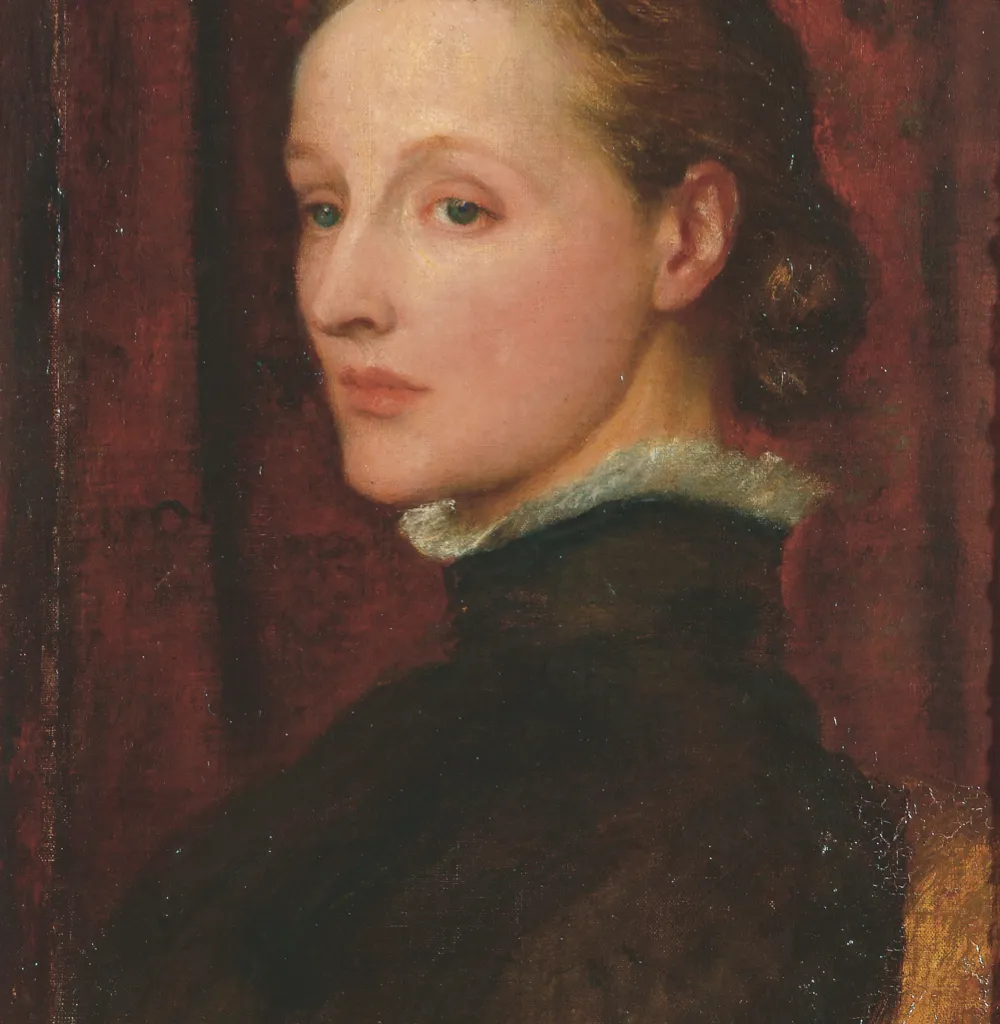
Mary Seton Watts-credit Watts Gallery & Chapel
In the early 20th century, the artist and designer Mary Seton Watts was one of the founder members of May’s Women’s Guild of Arts. Like Morris, she attended the National Art Training School then the Slade School of Art where she learnt clay modelling. In 1886, she married the Victorian painter George Frederic Watts and five years later they built a house, Limnerslease, in Compton, Surrey.
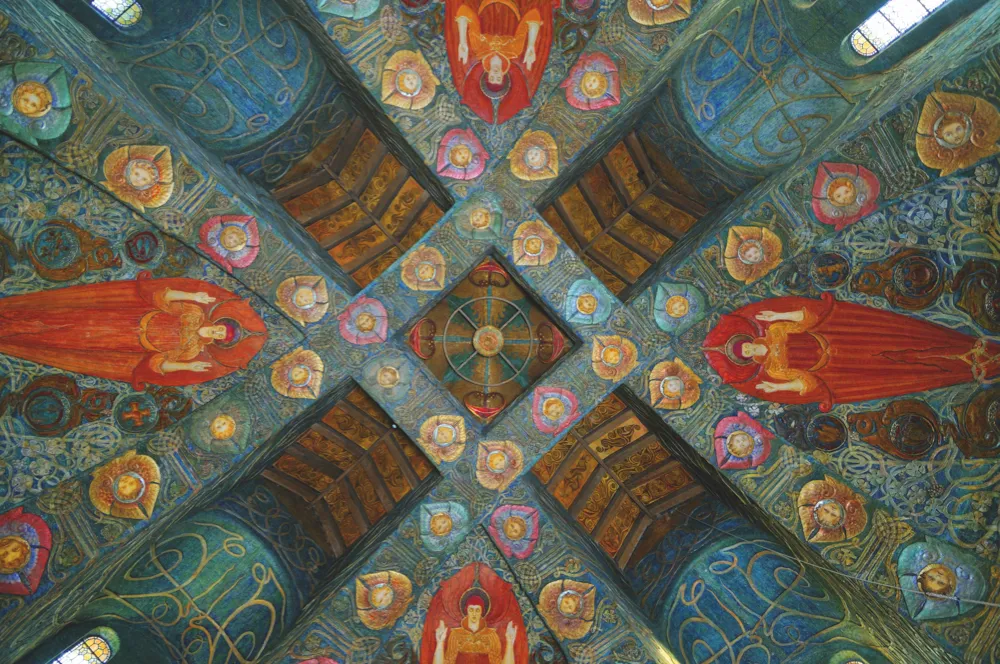
Britain’s answer to the Sistine Chapel, Watts Chapel’s intricately decorated ceiling was designed by Mary Seton Watts.
Seton Watts began to make her mark in 1895, when she offered to design a new mortuary chapel for the village and set up night classes to teach the villagers how to make terracotta tiles for it. She believed providing ‘art for all’ was a way of enriching lives, and her vision is encapsulated at the Watts Cemetery Chapel, a Grade I-listed redbrick building that is a tiny wonder of terracotta decoration and murals.
Mary Seton Watts didn’t stop there, however, and turned this artistic venture into a pottery. ‘The Compton Pottery grew out of these night classes and Seton Watts built a phenomenal business making devotional figures, bowls, painted panels and terracotta garden pots. She was one of the first women to be publicly credited, as ‘Mrs GF Watts’, in a Liberty catalogue,’ says Chelsea. The pottery continued until the 1950s and pieces pop up at auction from time to time – devotional figures for £200 to £700 or a pair of terracotta pots for £5,000.
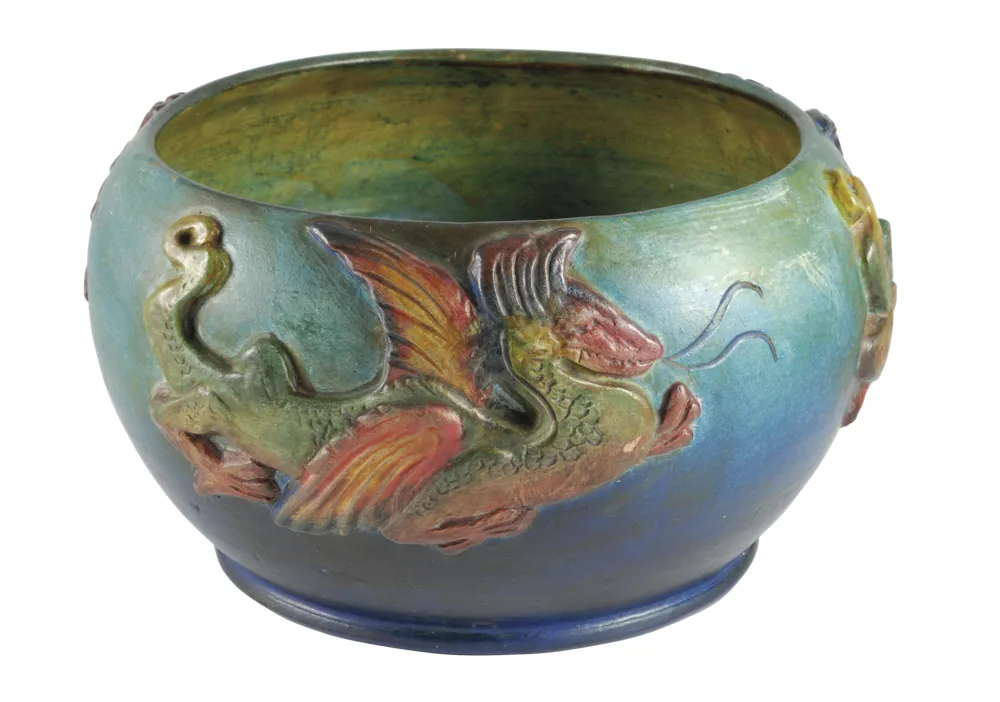
Mary Seton Watts and her husband George built the Compton Pottery in 1901, producing ornamental Compton ware, such as this bowl.
Macdonald sisters
Scotland was a hotbed of female talent, as exemplified by the Macdonald sisters. The girls attended the Glasgow School of Art in 1891, afterwards setting up studio together at 128 Hope Street. Here, they made a living from their paintings, copper metalware and gesso panels, but also gave lessons to other women.
While at art school, the sisters met their husbands-to-be, the architectural students Charles Rennie Mackintosh who married Margaret, and Herbert MacNair who wed Frances. They were dubbed ‘The Four’ and established the Glasgow Style, but it was Margaret and Charles who became pre-eminent. ‘Margaret worked closely with Charles Rennie Mackintosh on Hill House and the Willow Tea Rooms in Glasgow, but historically their output was credited to him,’ says Chelsea Eves.

Sinuous panels designed by Margaret Macdonald for The Hill House in Helensburgh.
Margaret brought softness to their designs, choosing pastel colours and detailed finishes that complemented the masculine lines of Charles. ‘He was a genius, and he tends to get the plaudits but they were collaborating and innovating together,’ says John Mackie. ‘He recognised Margaret’s contribution to his work, describing her as a catalyst and muse.’
In 2008 Margaret’s reputation was enhanced when her painting The White Rose and the Red Rose made £1.7m at Christie’s, a record for a Scottish artwork. Ever since, collectors have been snapping up the few Margaret works in private hands. ‘Watercolours are rare and cost £50,000 to £100,000, gesso panels similar, while most of the sisters’ metalwares are in museums now,’ says John. It’s a fitting place for them to be.

Sleep is a wonderfully ethereal watercolour by Frances Macdonald MacNair. It sold for £54,050 at Lyon & Turnbull in 2012.
The Scottish Trio
Phoebe Anna Traquair
The artist Phoebe Anna Traquair created murals, enamel jewellery, and enamel panels, and her work can be bought at auction today from £6,000 to £50,000. See her magnificent murals at the Mansfield Traquair Centre – a former Catholic Apostolic Church in Edinburgh’s New Town where, in 1892, Traquair was commissioned to paint biblical scenes.
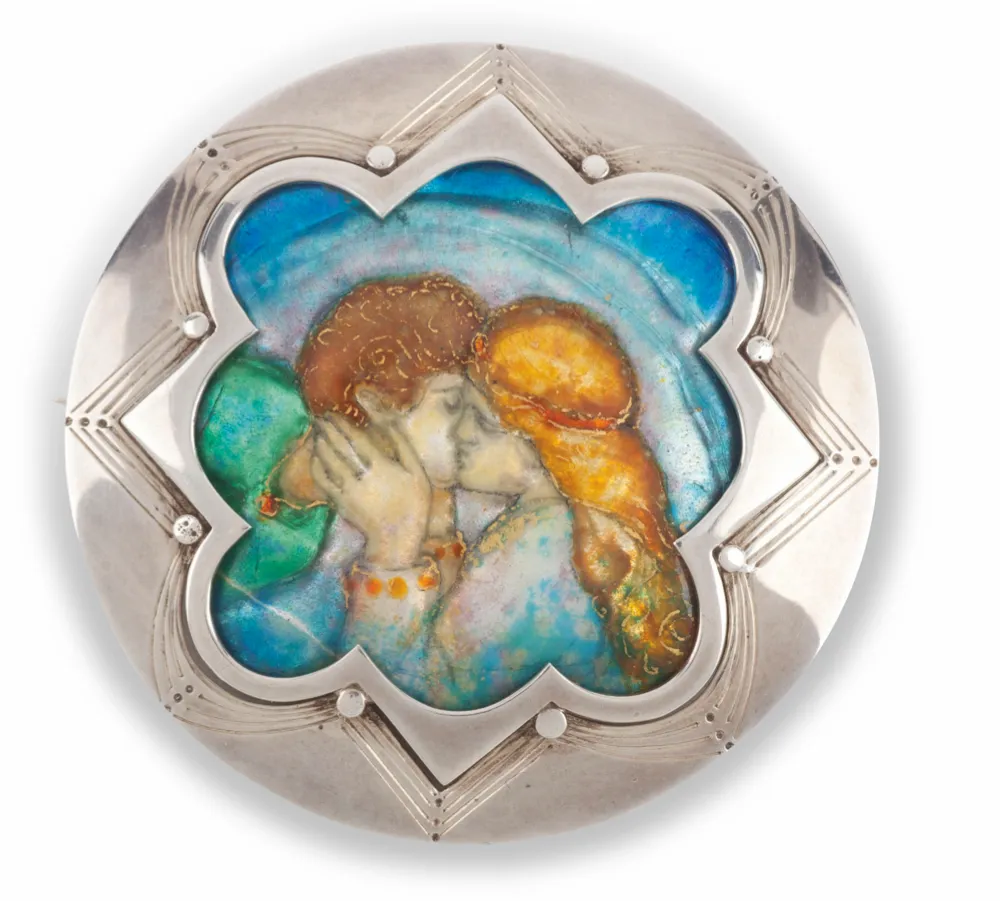
PHOEBE ANNA TRAQUAIR (1852-1936) 'THE KISS', CIRCA 1903 credit Lyon & Turnbull
Ann Macbeth
Ann Macbeth, who attended the Glasgow School of Art after the Macdonald sisters, is another well regarded artist whose textiles, such as dining tablecloths and the like, can still be found in the high hundreds of pounds at auction.

ANN MACBETH (1875-1948) AND HELEN STEVEN MACAREE (1891-1941) GLASGOW SCHOOL EMBROIDERED APPLIQUÉ PANEL, CIRCA 1900 credit Lyon & Turnbull
Jessie M King
The artworks of illustrator Jessie M King are another affordable option, owing to her prolific output. Though her early watercolours in pen and ink on vellum cost from £5,000 to £10,000 at auction, her later, looser style of watercolours can be picked up for £1,000 to £10,000. She also designed jewellery for Liberty.
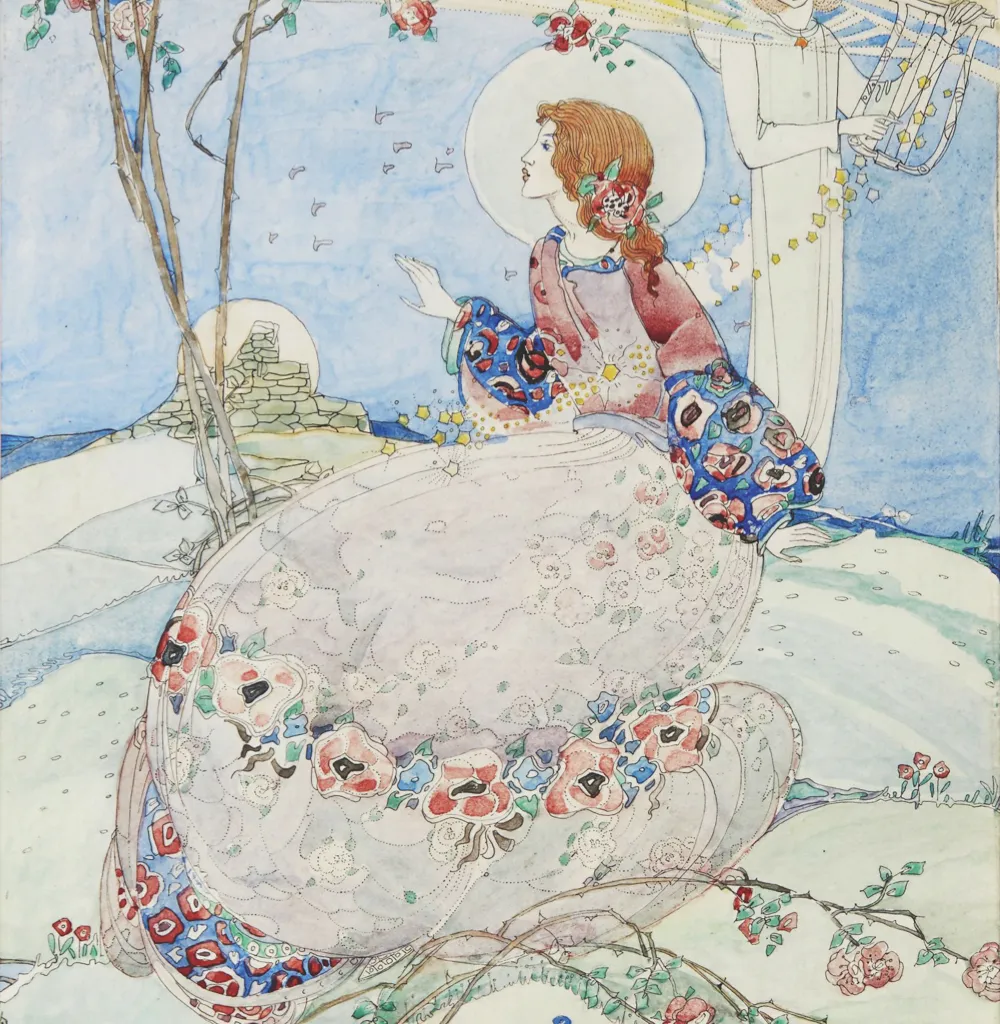
JESSIE MARION KING (SCOTTISH 1875-1949) O MY LOVE IS LIKE A RED RED ROSE.
Credit: LYON & TURNBULL
More from Homes & Antiques
- How to collect Arts and Crafts furniture
- Inside a 20th century Arts and Crafts home
- An artist's Arts and Crafts home in Yorkshire
- A gothic Arts & Crafts home
Sign up to our weekly newsletter to enjoy more H&A content delivered to your inbox.
